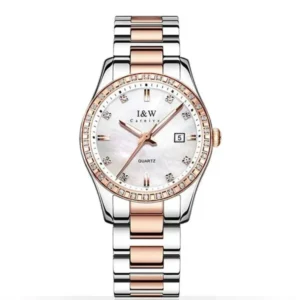A Complete Guide to Pure Sine Wave Inverters
In the evolving landscape of power solutions, pure sine wave inverters play a pivotal role. Understanding these devices can help you make informed choices about your energy needs, whether for home use, renewable energy systems, or recreational vehicles. This guide explores what pure sine wave inverters are, how they function, their advantages, and considerations for selecting the right model.
What Are Pure Sine Wave Inverters?
Pure sine wave inverters are devices that convert direct current (DC) electricity into alternating current (AC) electricity, mimicking the power supplied by utility companies. This makes them ideal for a wide array of applications, particularly those involving sensitive electronic equipment. Unlike modified sine wave inverters, which create a more basic waveform, pure sine wave inverters generate a smooth and continuous wave, ensuring optimal performance of connected devices.
How Do They Work?
The operation of a pure sine wave inverter begins with receiving DC power from a source such as a battery or solar panel. The inverter uses electronic circuits to convert this DC into AC power. This AC output is then refined to produce a clean sine wave. This process ensures that the output closely resembles the quality of grid electricity, making it suitable for powering sophisticated electronics.
Advantages of Pure Sine Wave Inverters
Compatibility: Pure sine wave inverters can power a wide range of devices, including sensitive electronics like laptops, televisions, and medical equipment. Their ability to deliver stable voltage reduces the risk of damage to these devices.
Efficiency: These inverters typically operate more efficiently than their modified counterparts, leading to less energy waste. This efficiency can translate into cost savings over time.
Reduced Noise: Devices powered by pure sine wave inverters generally produce less electrical noise. This is particularly beneficial in settings where sound quality is important, such as home theaters or audio production.
Longevity of Devices: The stable power output from pure sine wave inverters helps prolong the lifespan of connected equipment by minimizing the risk of overheating and electrical stress.
Versatility: Pure sine wave inverters can be used in various applications, from home backup systems to solar energy setups and RVs, making them a flexible choice for different power needs.
Common Applications
Home Power Backup
In residential settings, pure sine wave inverters are invaluable during power outages. They can efficiently power essential appliances like refrigerators, lights, and heating systems, ensuring that homeowners maintain comfort and functionality.
Renewable Energy Systems
For solar energy users, a pure sine wave inverter is a crucial component that converts the DC power generated by solar panels into AC power for household use. This conversion is essential for maximizing the efficiency of solar energy systems.
Recreational Vehicles (RVs)
Traveling in an RV often requires a reliable power source for various appliances. Pure sine wave inverters allow users to enjoy modern conveniences, such as cooking and entertainment, while on the road, providing a seamless experience.
Medical Equipment
In healthcare settings, the reliability of pure sine wave inverters is critical. They ensure that vital equipment receives stable power, which is essential for patient safety and the proper functioning of devices like ventilators.
Choosing the Right Pure Sine Wave Inverter
When selecting a pure sine wave inverter, consider the following factors:
Power Requirements: Assess the total wattage of the devices you plan to power. Choose an inverter that can handle your needs without risk of overload.
Input Voltage: Ensure the inverter’s input voltage matches your power source, whether it’s from batteries or solar panels.
Surge Capacity: Some devices require additional power during startup. Look for a pure sine wave inverter with sufficient surge capacity to handle these demands.
Size and Portability: If you intend to use the inverter in multiple locations, consider its size and weight for easier transport.
Brand Quality: Opt for reputable brands known for reliability and customer support. Research reviews and user feedback to guide your choice.
Maintenance Tips
To ensure the longevity and efficiency of your pure sine wave inverter, follow these maintenance tips:
Inspect Regularly: Check the inverter and its connections for signs of wear or damage to maintain optimal performance.
Keep It Clean: Dust and debris can affect functionality. Regularly clean the unit and ensure it has adequate ventilation to prevent overheating.
Monitor Performance: Track performance metrics to identify any issues early and address them promptly.
Battery Maintenance: If your inverter relies on batteries, ensure they are well-maintained for optimal operation.
Conclusion
In conclusion, pure sine wave inverters are essential for providing reliable, clean power across various applications. Their compatibility with sensitive electronics, efficiency, and versatility make them an excellent choice for homeowners, renewable energy users, and RV enthusiasts alike. Understanding their benefits and how to select the right inverter will enhance your energy experience. Whether you’re preparing for a power outage or optimizing your renewable energy system, investing in a pure sine wave inverter is a wise decision for reliable energy solutions.














Post Comment